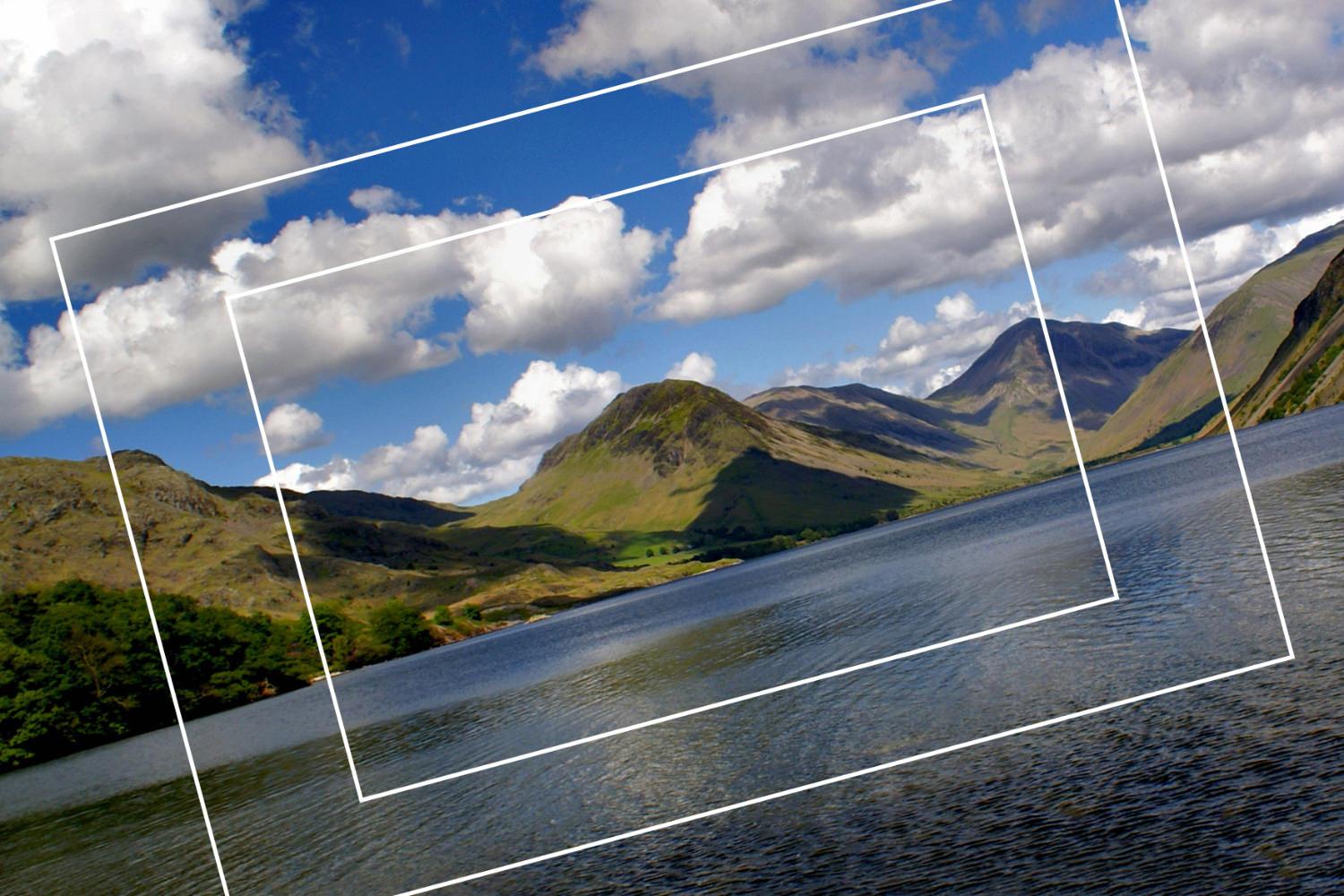Crop factor is a term that describes the difference between your camera's sensor size and a traditional 35mm film frame. It's mainly used as a way of comparing lens focal lengths when fitted to different cameras, which is more important than it sounds.
Although crop factor seems complicated, it's not as hard as you might think, and it's an important and useful concept to grasp. Once you understand it, you'll be able to make more informed choices when selecting which lens to use, or when buying equipment.
The Problem
When you fit a lens to a camera, it projects a circular image towards the back of the camera. For a particular lens, this image is the same regardless of what camera it's mounted on. When the image hits the film or sensor, a rectangular portion is recorded.
In the days before digital photography, all SLR cameras used 35mm film. This meant that they all captured the same portion of the projected image, resulting in the same photo for a given lens.
Digital cameras have complicated things somewhat. Film has been replaced by sensors which are usually smaller than 35mm film. Because they're physically smaller, they capture a smaller area of the projected image, resulting in a photo which covers a narrower angle of view.
A cropped sensor captures less of the projected image. The narrower angle of view gives the impression of using a longer focal length. Image by Barry.
This narrower viewing angle makes the photo appear more "zoomed in", which poses a problem - if the same lens can produce different images on different cameras, how can you compare lenses in a meaningful way, or predict what field of view they'll cover on different cameras? Crop factor was invented to solve this problem.
What is Crop Factor?
Crop factor describes the size difference between a 35mm film frame and your camera's sensor. For example, if your camera has a crop factor of 2, it means that a 35mm film frame is twice as large as your camera's sensor.
Modern digital cameras are fitted with sensors of varying size. The best digital SLRs have sensors which are the same size as 35mm film, so they have a crop factor of 1 (this is known as "full-frame"). At the other end of the scale, digital compact cameras have very small sensors, and high crop factors of 5 of 6. The higher the crop factor, the more noticeable the "zooming in" effect for a given focal length.
You can calculate your camera's crop factor by dividing the diagonal length of a 35mm frame by the diagonal length of your camera's sensor. The numbers can get a bit convoluted, but thankfully camera manufacturers list the crop factor in the user manual to save you time and effort.
Effective Focal Length
This is all very interesting (or maybe it isn't!), but how does it affect you when you're out taking photos, or shopping for a new camera or lens? Well, it allows you to make comparisons between different lenses and cameras that would otherwise be difficult to make.
If you multiply a lens's focal length by the camera's crop factor, you get the "equivalent focal length", which is the focal length needed to produce the same angle of view on a 35mm camera. This is why you might also hear crop factor referred to as the "focal length multiplier" (or "FLM").
For example, a 50mm lens on a 1.5 crop factor camera has an effective focal length of 75mm, because 50 x 1.5 = 75. If you fitted a 75mm lens to a 35mm camera, you'd get a photo with the same field of view.
This removes some of the guesswork involved in choosing a lens. You might want a lens that replicates the effect of a 200mm telephoto lens on a full-frame camera. By using your camera's crop factor, you can calculate the exact focal length you need to shop for.
The following table lists the effective focal lengths of some of the most common focal lengths when used with cameras with common crop factors.
| 1.3x | 1.5x | 1.6x | 2.0x | |
|---|---|---|---|---|
| 10mm | 13mm | 15mm | 16mm | 20mm |
| 17mm | 22mm | 26mm | 27mm | 34mm |
| 20mm | 26mm | 30mm | 32mm | 40mm |
| 28mm | 36mm | 42mm | 45mm | 56mm |
| 35mm | 46mm | 53mm | 56mm | 70mm |
| 50mm | 65mm | 75mm | 80mm | 100mm |
| 100mm | 130mm | 150mm | 160mm | 200mm |
| 200mm | 260mm | 300mm | 320mm | 400mm |
| 400mm | 520mm | 600mm | 640mm | 800mm |
| 600mm | 780mm | 900mm | 960mm | 1200mm |
Hopefully you now have a clearer idea of what crop factor means and how it allows you to directly compare lenses regardless of the camera body. It will help you make more informed decisions when buying, and assist you in choosing the right lens to shoot a scene, taking away some of the guesswork and confusion involved in selecting a lens.
